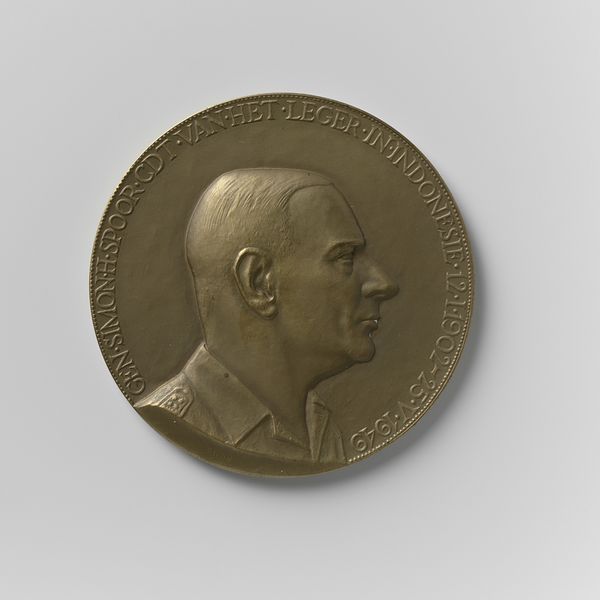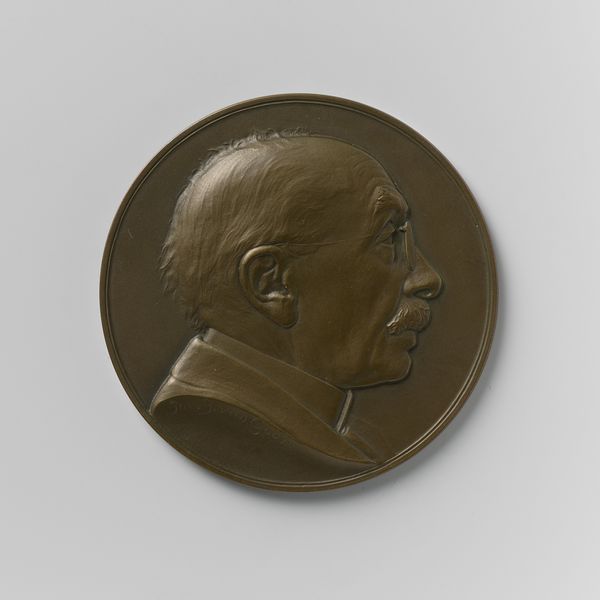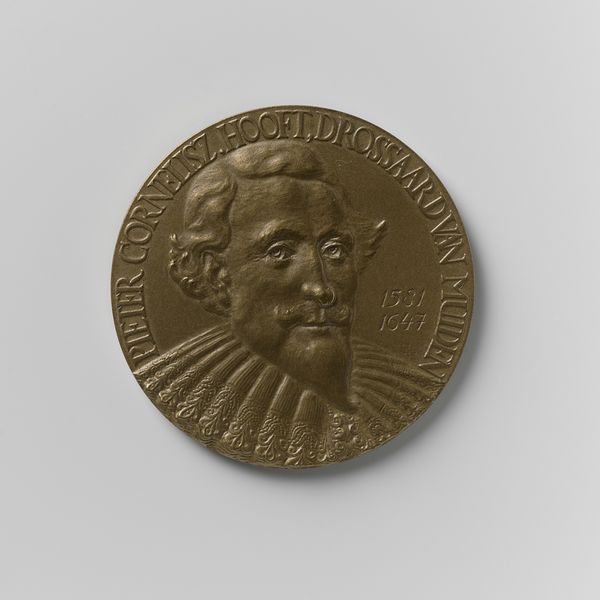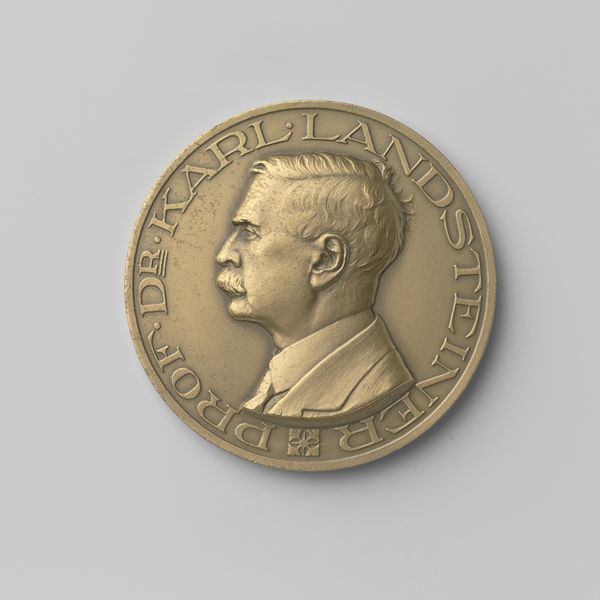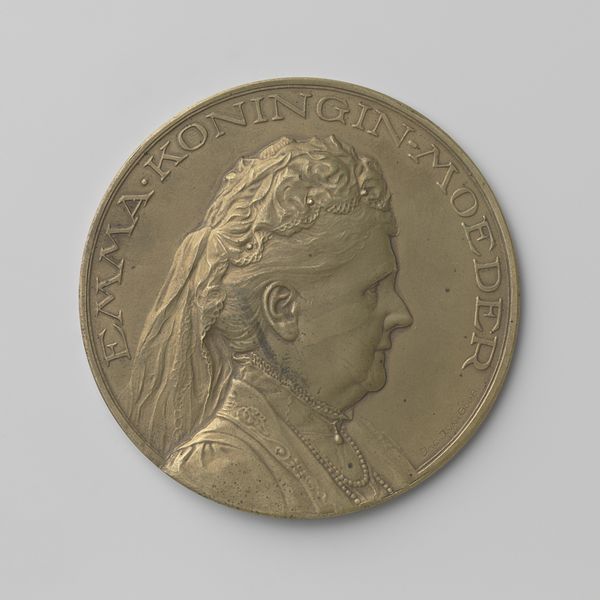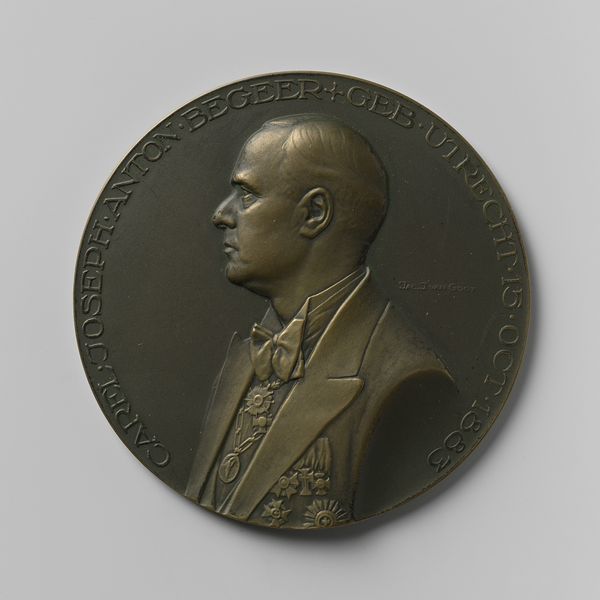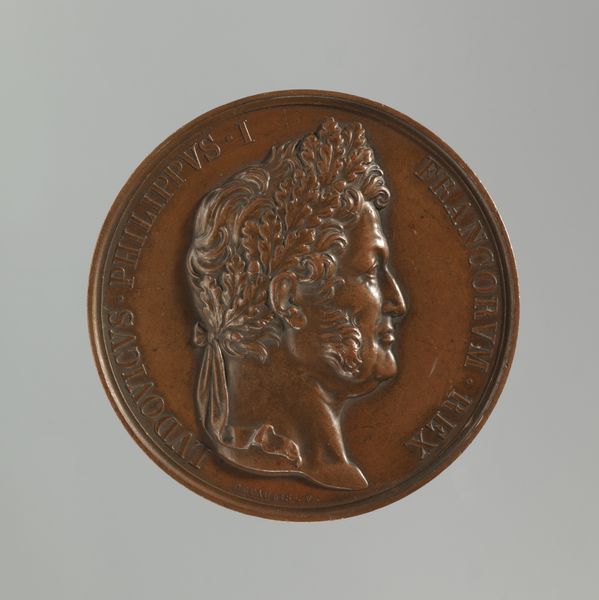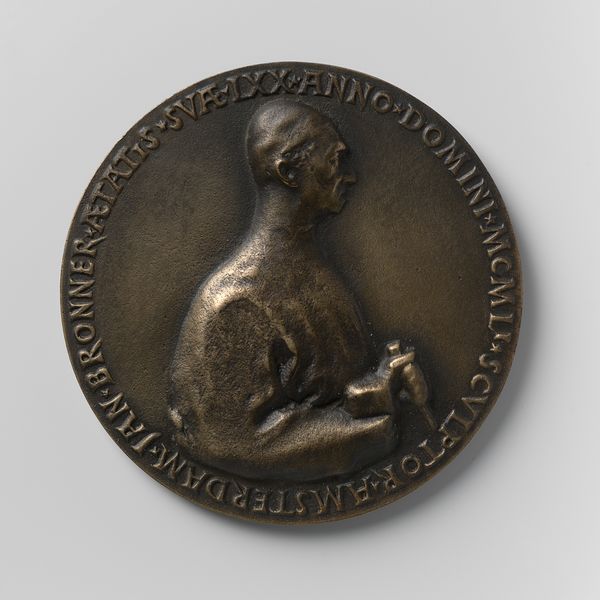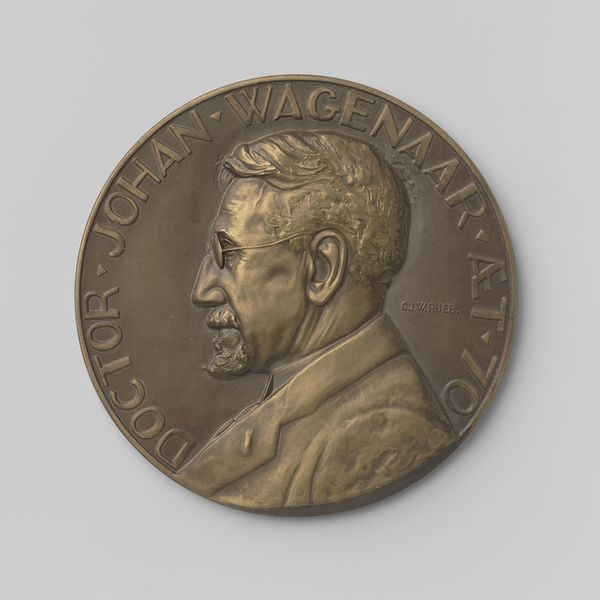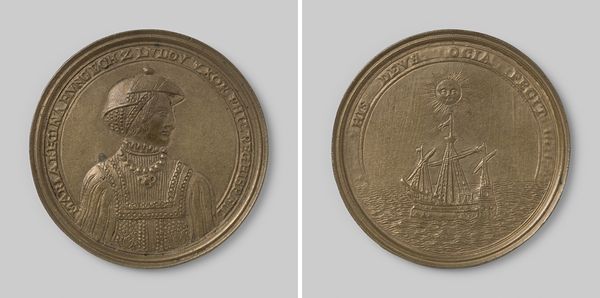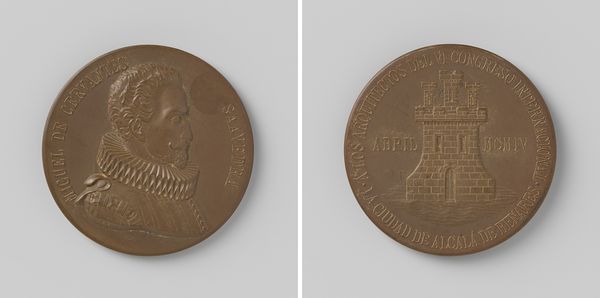
Bonifacius Cornelis de Jonge Gouverneur-Generaal van Nederlandsch Indië 1936 1936
0:00
0:00
bronze, sculpture
#
portrait
#
bronze
#
sculpture
#
modernism
Dimensions: diameter 6.0 cm, weight 77.64 gr
Copyright: Rijks Museum: Open Domain
Curator: Here we have a bronze portrait sculpture created by Oswald Wenckebach in 1936. The piece is a medallion depicting Bonifacius Cornelis de Jonge, who served as the Governor-General of the Dutch East Indies. Editor: It’s striking how flat and stylized it is for a portrait. The low relief emphasizes the clean lines, lending a somewhat impersonal formality to the representation of power. It almost reads as a symbol rather than an individual. Curator: Indeed, it functions very much as a symbolic object. These sorts of portrait medallions were often commissioned to commemorate individuals holding significant political office. The medal, practically speaking, allowed for a dissemination of their image within social circles. It solidified and promoted an impression of power during a complicated era. Editor: I agree, that stylized formality is potent, the texture on the uniform in particular seems deliberately exaggerated. Look how the lines of the clothing practically create visual rhythms. Wenckebach clearly focused on constructing a clear, almost graphic image. Did that play a role in conveying particular messages, do you think? Curator: Absolutely, Wenckebach was working within the conventions of official portraiture but there are hints of Modernism as a stylistic departure. This medallic form in particular reflects its status as something intended for circulation as a sort of controlled iconography. The stiff bearing of the subject and the overall composition certainly evoke a sense of authority, projecting the colonial government’s might and permanence, whether that was true on the ground in 1936 or not. Editor: It is fascinating to see this kind of power dynamic distilled to its visual essence within the clean curves and polished bronze. I see a kind of elegance in it despite its message. Curator: I've always been struck by how it offers such a concise material encapsulation of governance during a specific moment in history. Editor: Yes, those textures do create a rich visual vocabulary.
Comments
No comments
Be the first to comment and join the conversation on the ultimate creative platform.
